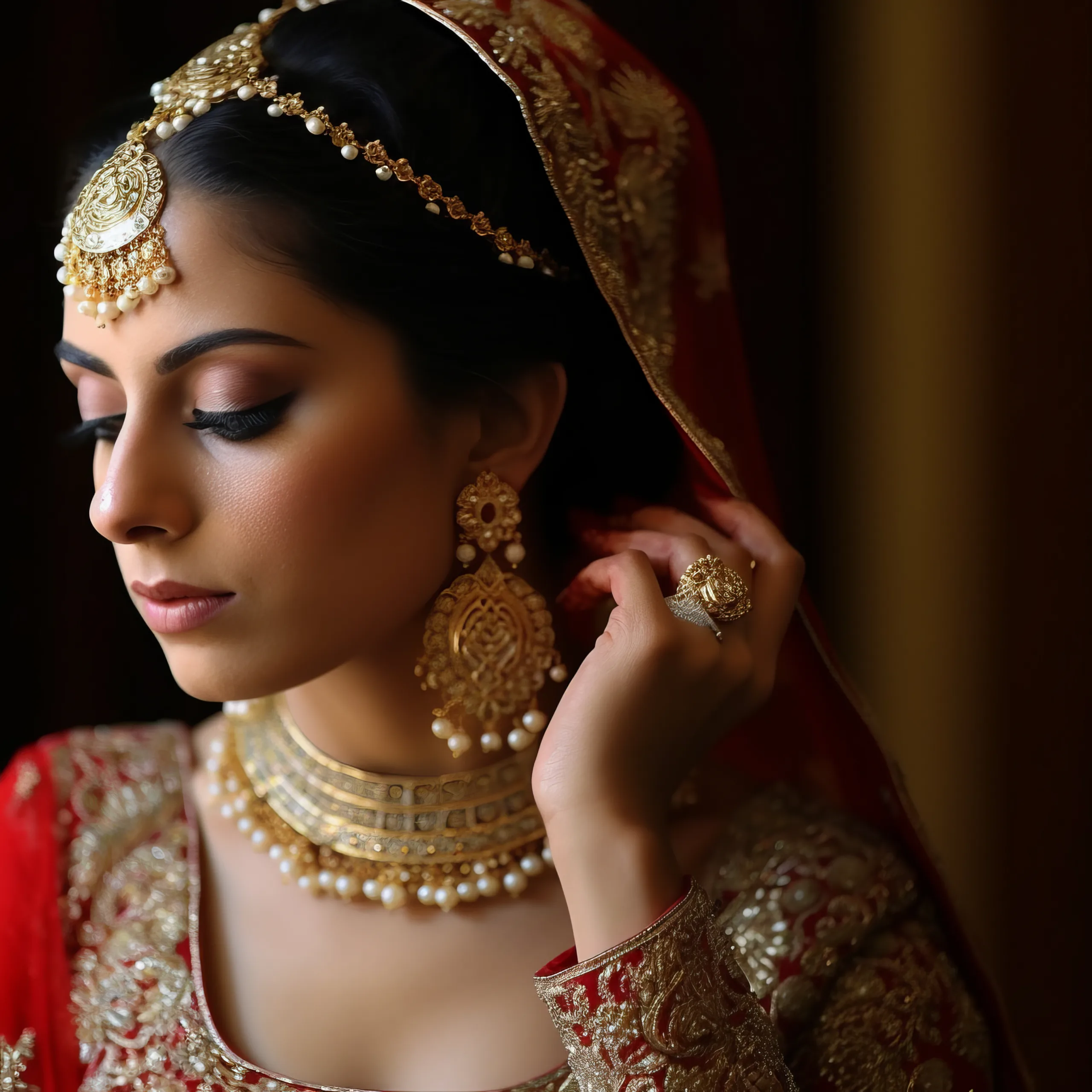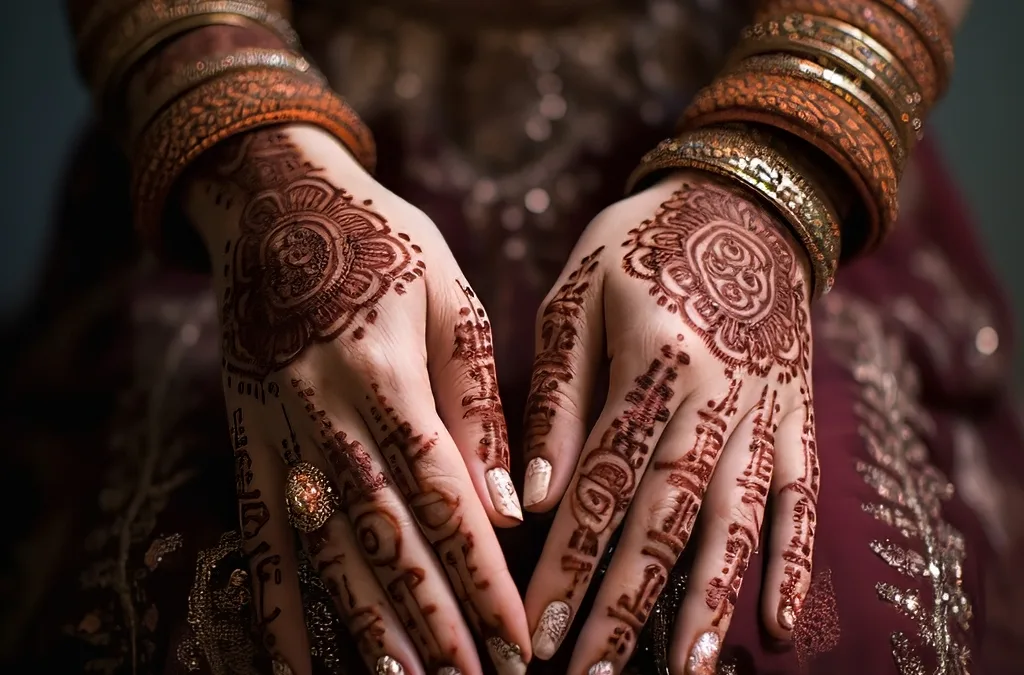Weddings Around the World
Our exploration begins with an overview of the various wedding traditions observed in different religious and cultural communities across the globe. We’re talking about Christian, Hindu, Muslim, Jewish, Buddhist, Sikh, and Shinto wedding traditions. So, let’s start with the Christian wedding rituals.
Christian weddings
Christian weddings are wonderful events, symbolizing a sacred union under the blessings of God. These ceremonies involve a mixture of rituals that hold deep symbolic significance. The bride’s white wedding dress, for example, is an enduring tradition that dates back to Queen Victoria and Prince Albert’s wedding in 1840. It represents the purity and innocence of the bride.
Further, the bride often wears a veil, signifying the transfer of care from her father to her husband. It also references the biblical Ark of the Covenant veil, signifying a holy mystery. We also see the father ‘giving away’ the bride, signifying parental approval of the groom.
Christian weddings frequently include Bible readings and prayers, reminding the couple of the spiritual basis of their love and unity. Communion is sometimes taken, symbolizing Christ’s sacrifice and the couple’s commitment to God. Rings are exchanged, vows are made, and unity ceremonies such as the lighting of a unity candle are performed. These ceremonies vary by denomination, culture, and personal preference.
Let’s turn our attention next to Hindu wedding rituals.
Hindu weddings, or Vivaha, are vibrant and culturally rich celebrations. These ceremonies go beyond the physical, spiritual, and emotional union of two people, directing them toward fulfilling their duties towards each other, their families, and society.
The traditions are many, from pre-wedding rituals like the Sagai (engagement), Mehendi (henna), and Haldi (turmeric) ceremonies to the wedding itself. The groom arrives on a decorated horse in the Baraat, a wedding procession. The Jaimala ritual involves the exchange of garlands, signifying mutual acceptance and respect. The bride’s father ‘gives away’ the bride to the groom, a ritual known as Kanyadaan.
There’s the Saptapadi, where the couple walks seven times around a sacred fire, solidifying their legal status as husband and wife. The groom ties a Mangalsutra (a sacred necklace) around the bride’s neck, denoting her new status as a married woman. The wedding concludes with Bidaai, a farewell to the bride from her family and friends. As with the Christian ceremonies, these rituals vary based on the region, culture, and personal preferences.
In Jewish weddings
In Jewish weddings, tradition and ritual are woven deeply into the fabric of the ceremony. The beauty of the relationship between husband and wife is symbolized, as well as their obligations to each other and the Jewish community.
Key rituals include signing the Ketubah, a symbolic marriage contract, and the Bedeken, or veiling, which emphasizes the groom’s love for the bride’s inner beauty. Both sets of parents walk their children down the aisle to the Chuppah, a four-cornered canopy symbolizing the home being built by the couple. The bride circles the groom under the Chuppah in the Ashkenazi tradition, and rings are exchanged.
A series of seven blessings known as the Sheva B’rachot are then shared. The ceremony ends with the breaking of a glass, symbolizing various meanings including the fragility of life and the destruction of the temple in Jerusalem.
African wedding traditions are incredibly diverse, reflecting the continent’s rich tapestry of cultures. From the Knocking Ceremony, where the groom’s family formally asks for the bride’s hand in marriage, to the Engagement Ceremony, which is. Encyclopedia of World Cultures:

Buddhist Wedding Traditions
Buddhist weddings are often very simple, emphasizing the spiritual essence of the ceremony rather than the material aspects. Here are some of the most common Buddhist wedding traditions:
Taking Refuge:
Taking Refuge: The couple takes refuge in the Triple Gem, which means they promise to commit to the Buddha (the enlightened one), Dharma (the teachings of Buddha), and Sangha (the community)1. Homage to Ancestors: This includes paying respect to the deceased family members and ancestors of the couple. The couple lights a candle or incense sticks and makes offerings of food, tea, or fruit1. Recitation of Suttas: The couple and all present recite certain Buddhist scriptures. The Sigilovdda Sutta (the discourse of Sigala) is often chosen for this recitation1. Blessings by the Monks: The monks bless the couple and chant auspicious sutras. They might sprinkle holy water over the couple and the guests to transfer merits. Sharing of a Drink: The couple may share a ceremonial drink of sake or tea, to symbolize their union1. Candle Ceremony: The couple may light individual candles and then use these to light a single candle together, symbolizing their unity. These traditions may vary based on the specific branch of Buddhism, as well as cultural and personal preferences.
Next, let’s explore the wedding traditions of Sikhism.
Sikh weddings, known as Anand Karaj, are filled with rituals and ceremonies that have deep spiritual meaning. Here are some of the most common Sikh wedding traditions:
Pre-Wedding Rituals: These include several rituals like the Roka (pre-engagement ceremony), the Kurmai (engagement ceremony), and the Mehendi and Sangeet ceremonies. The Mehendi ceremony involves applying henna to the bride’s hands and feet. Baraat: The groom arrives at the Gurdwara (Sikh temple) or the wedding venue with a procession of family and friends, known as the Baraat. Milni: This is a meeting of the two families. The key members from the groom’s family are introduced to the key members from the bride’s family1. Anand Karaj: The couple walks around the Guru Granth Sahib Ji (the Sikh holy book) four times as the Laava (the four hymns which seal the marriage) are recited1. Langar: After the Anand Karaj, a communal meal is served to all guests in the Langar hall. Doli: This is the bride’s farewell. The bride’s family and friends bid her an emotional farewell as she leaves with her husband to start a new life. These traditions may vary based on the specific region of India, as well as cultural and personal preferences.
Michael & Tracy of thefxworks Photography and Video
Now let me tell you about this remarkable wedding photographer named Michael. He’s the kind of guy who effortlessly captures the essence of a wedding day with his unique style and exceptional skills. It’s like he has this innate ability to freeze time and preserve those fleeting moments of pure joy and love.
But it’s not just his talent that sets Michael apart; it’s his unwavering dedication to his craft and his top-of-the-line equipment. This guy spares no expense when it comes to ensuring that every shot is perfect. His camera gear could probably rival that of a NASA space mission. I mean, who needs a rocket when you have a lens that can zoom in on a tear of happiness rolling down the bride’s cheek from a hundred yards away?
Michael is no novice either. He’s been in the wedding photography game for years, honing his skills and earning a reputation as one of the authorities in the industry. And the best part? He’s got the awards to prove it. This guy has a trophy shelf that could rival an Olympic gold medalist’s. He’s been recognized time and time again for his exceptional work, and rightly so.
Now, what really impresses me about Michael is his uncanny ability to understand the intricacies of a wedding day’s timeline. It’s like he has a sixth sense for knowing exactly when and where to be to capture those once-in-a-lifetime moments. From the nervous anticipation in the morning to the wild dance moves on the dance floor, Michael is there, camera in hand, ready to immortalize every memory.
And let’s not forget about his local knowledge. Michael knows these streets like the back of his hand. He can sniff out the most picturesque locations and hidden gems that will make your wedding photos truly remarkable. Whether it’s a whimsical garden or a centuries-old church, this guy knows how to find the perfect backdrop for your love story.
But don’t just take my word for it. The proof is in the pudding, as they say. Just take a peek at Michael’s portfolio website, and you’ll be blown away. The images he captures are nothing short of breathtaking. Each photo tells a story, capturing the raw emotions and the sheer beauty of the moment. And if you need any more convincing, just read through the testimonials from his happy clients. They rave about his professionalism, his ability to put them at ease, and, most importantly, the stunning results.
So, my friends, if you’re looking for a wedding photographer who will go above and beyond to immortalize your special day, look no further than Michael. With his exceptional skills, top-notch equipment, and undeniable authority in the field, he’ll make sure that every moment is captured with perfection. Trust me, you won’t be disappointed.

